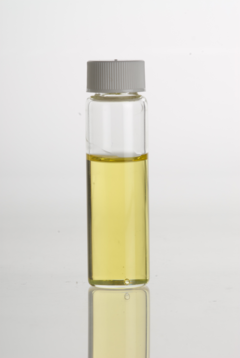
Jojoba oil (/həˈhoʊbə/ ) is the liquid produced in the seed of the Simmondsia chinensis (jojoba)[1] plant, a shrub, which is native to southern Arizona, southern California, and northwestern Mexico. The oil makes up approximately 50% of the jojoba seed by weight.[2] The terms "jojoba oil" and "jojoba wax" are often used interchangeably because the wax visually appears to be a mobile oil, but as a wax it is composed almost entirely (~97%) of mono-esters of long-chain fatty acids (wax ester) and alcohols (isopropyl jojobate), accompanied by only a tiny fraction of triglyceride esters. This composition accounts for its extreme shelf-life stability and extraordinary resistance to high temperatures, compared with true vegetable oils.
- ^ Sturtevant, Drew; Lu, Shaoping; Zhou, Zhi-Wei; Shen, Yin; Wang, Shuo; Song, Jia-Ming; Zhong, Jinshun; Burks, David J.; Yang, Zhi-Quan; Yang, Qing-Yong; Cannon, Ashley E.; Herrfurth, Cornelia; Feussner, Ivo; Borisjuk, Ljudmilla; Munz, Eberhard; Verbeck, Guido F.; Wang, Xuexia; Azad, Rajeev K.; Singleton, Brenda; Dyer, John M.; Chen, Ling-Ling; Chapman, Kent D.; Guo, Liang (13 March 2020). "The genome of jojoba (Simmondsia chinensis): A taxonomically isolated species that directs wax ester accumulation in its seeds". Science Advances. 6 (11): eaay3240. Bibcode:2020SciA....6.3240S. doi:10.1126/sciadv.aay3240. PMC 7065883. PMID 32195345.
- ^ Undersander DJ, Oelke EA, Kaminski AR, Doll JD, Putnam DH, Combs SM, Hanson CV (1990). Jojoba. Alternative field crops manual (Report). University of Wisconsin-Extension, Cooperative Extension.